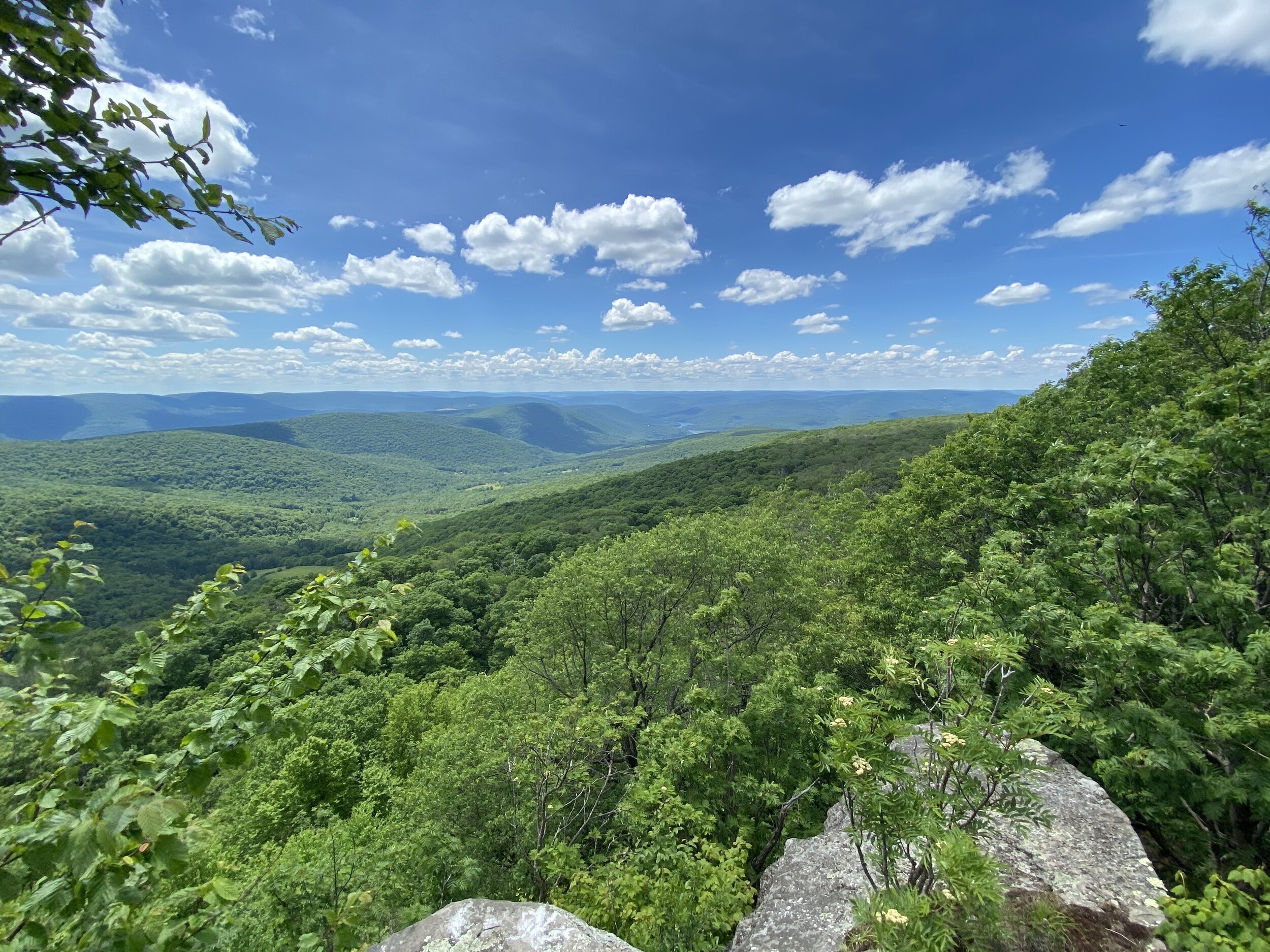Finding Solitude in the Catskill Park
by Jeff Senterman
There’s a frequent lament that I hear from hikers in the Catskills that the trails are just too busy.
Although this can be true for popular hikes, especially as more and more people are discovering the outdoors, the Catskill Park is vast—and with a little bit of work, you can find a quiet corner of the Catskill Park, even on the busiest summer weekend.
Photo: Jeff Senterman
With more than 300,000 acres of Forever Wild Forest Preserve lands spread across four different counties, the Catskill Park is home to more than 300 miles of hiking trails. On its seemingly busiest days, visitors are swarming just a handful of popular areas, leaving a multitude of less traveled open spaces and miles of trails sparsely visited. The trick to finding a hiking experience in the Catskills with solitude, which is vital at this particular moment in history, is knowing when and where to plan your hike and to always have a backup plan.
Visit the most frequented areas on a beautiful summer weekend and you’ll have trouble even finding a parking spot in places like: the Devil’s Path, Kaaterskill Falls, Burroughs Range, Giant Ledge, and the Blackheads. There are good reasons why these areas are so busy: challenging trails, beautiful waterfalls, and some of the best views of the Catskill Mountains peaks. Search the internet for “best view,” “tallest waterfall,” “toughest trail,” or any other number of superlatives before “in the Catskills” and these are the places that pop up. Although they may deserve those titles, their reputation is exactly what has caused them to be the busiest locations of the Catskill Park.
So, for the weekend visitor who wants to find solitude, what is there to do?
First, be prepared—buy yourself a map. The Catskills Visitor Center (CVC) sells three main trail maps for the Catskill Park. Any one of them will give you enough information to plan a quiet hike. That map is key not just for planning on where you are going to hike, but it is also a critical navigation tool you should always have in your pack when you hit the trail.
With your map, take a look at the entire Catskill Park. Notice where those busy areas are. They tend to be clustered around the eastern third of the Park and in the Park’s high peaks region. Now look and see how much more of the Park there is. All of that other open space is where you'll find those less crowded areas.
My eyes drift west when I’m planning a hike on busy weekends in the Catskills. Being further from the Thruway and the Hudson Valley, western hikes are slightly harder to reach and their geography isn’t as instantly striking as it is in the eastern mountains. Therefore, trails that begin further away from the main highways in the Park are also likely to be somewhat less crowded (not counting the popular areas).
Find trail networks that are off the beaten track on your map and explore those areas.
Although you may not be able to boast about reaching the highest peak or seeing the most beautiful waterfall, you also won’t be complaining about strangers crowding your outdoor space. In the time of COVID-19, a peaceful weekend of quiet Catskills hikes is more valuable than seeking the crowd favorites.
The Delaware Wild Forest, located in the western corner of the Park; the Willowemoc Wild Forest, in the southwestern portion of the Park; and the Dry Brook Ridge Wild Forest, located in the central Catskills are great spots to focus on for a mix of low number of visitors and good trail systems. All three of these areas have extensive trails great for anything from a short day-hike to a multi-day backpacking trip. Although the mountains are typically gentler in these areas and the elevations lower, there are plenty of wetlands, small ponds, and photo-worthy vistas from many spots.
Remember: be prepared.
Because these areas are less visited than other portions of the Park, some trails may not always be as well maintained or as easy to follow. They also tend to be muddier than trails you’d find in the eastern Catskills. Be prepared with your map, good hiking shoes (preferably waterproof), and the proper supplies and gear in your backpack.*
You may be wondering which trail exactly is the best to enjoy when you’re looking for solitude. I can’t make it that easy, can I? Such advice is exactly how trails become popular for the very internet search results that make them so. Part of the challenge and opportunity of finding a quiet hike in the Catskills is that you have to do some work. I promise you if you put that effort in, you’ll find yourself in a quiet corner of the Park wondering why everyone else is packing into those few popular locations.
Jeff Senterman in his happy place.
Find Jeff and his hiking adventures on Instagram.


